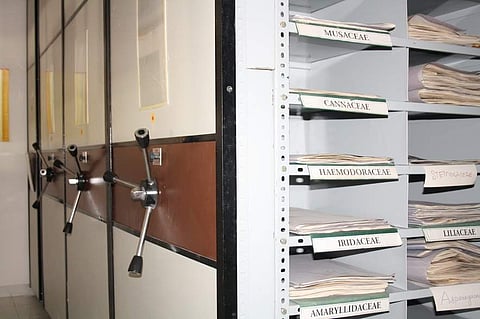

Unsure of what the specie of plant is that you have come across or know only its regional names? Data gathered by Transdisciplinary University can come to your rescue.
Walk into the Herbarium of the lush green campus of this University and you will get to see nearly any plant specie you name. A Herbarium houses a collection of dried species of plants along with the essential data pertaining to them.
The Indian Systems of Medicines use 6,500 species of plants. Of these, you can find specimens of 4,000 plants at this varsity at Yelahanka in Bengaluru.
Samples of plants from species located across the country have been collected and stored over the years to make it accessible for researchers and students. Be it botany experts, doctors of the Indian Systems of Medicine or enthusiasts, the collection is open for all to gather data from.
What started in 1995 as a small collection with about 100 species, today, has grown to be among the country’s largest Herbariums according to varsity researchers.
Dr Noorunnisa Begum, Associate Professor, Transdisciplinary University says that it is the efforts of five botanists that have helped build the collection.
“Botanists gather data about species growing in various geographical locations. With the help of forest officials, they set off to these destinations. The samples are brought back, dried, mounted, labelled following which high-resolution images are taken and uploaded on the digital library collection. The mounted samples go into the herbarium collection,” she says as she walks the reporter through a heap of Herbarium specimens.
Looking for samples or data about a plant? Gathering data is no tedious process here. Even knowing their colloquial names would suffice. For, details of all the collections with local names, scientific names have been uploaded on a digital platform.
Names of each species of the plant, its indigenous name and name in 35 different languages have been put into a virtual herbarium that is open for all.
The varsity also conducts sessions to help one learn to identify plants. From school students to researchers, there is a course for all. Dr Begum explains that the varsity has a specific syllabus to cater to the needs of each of these. “We have simple sessions for children. For them, it is mostly to sensitise them on a need to identify plants. For researchers as well, there are tailor-made sessions,” she says.
